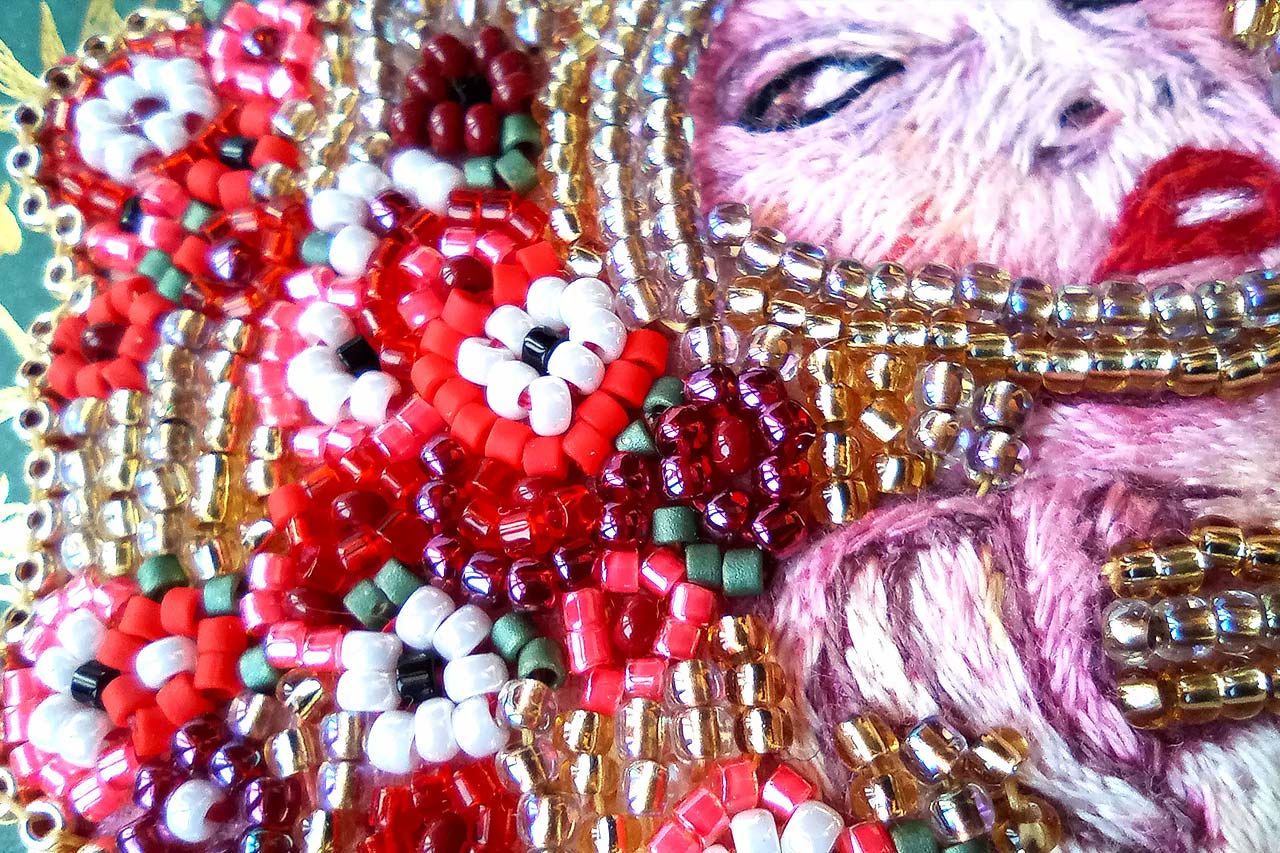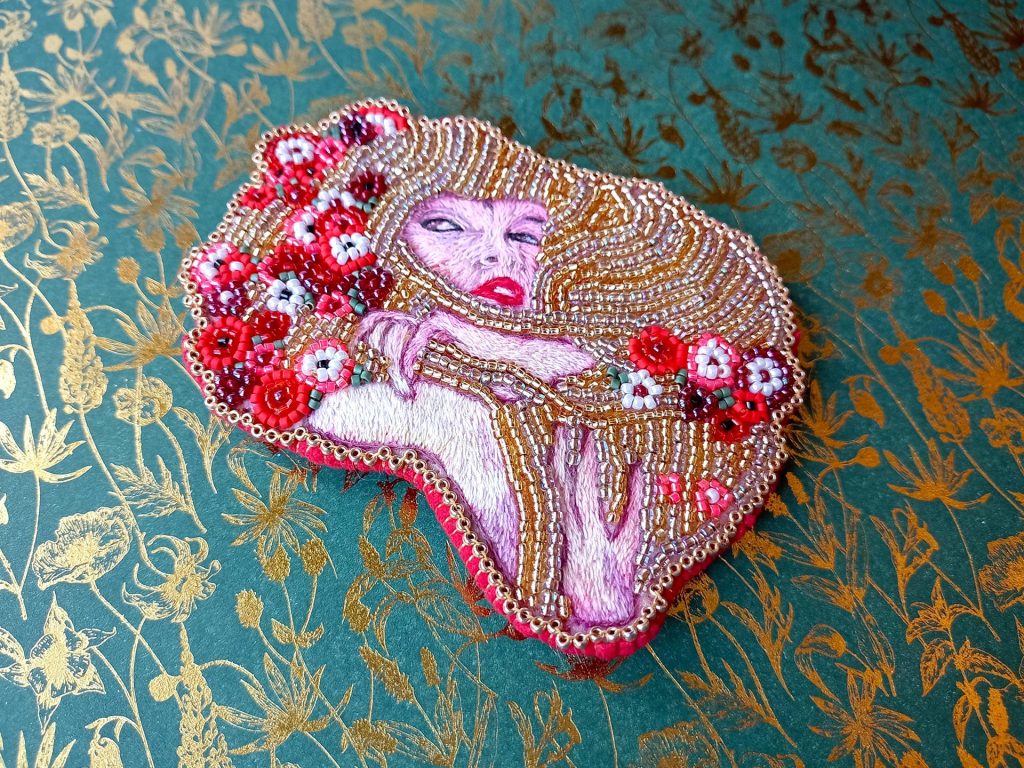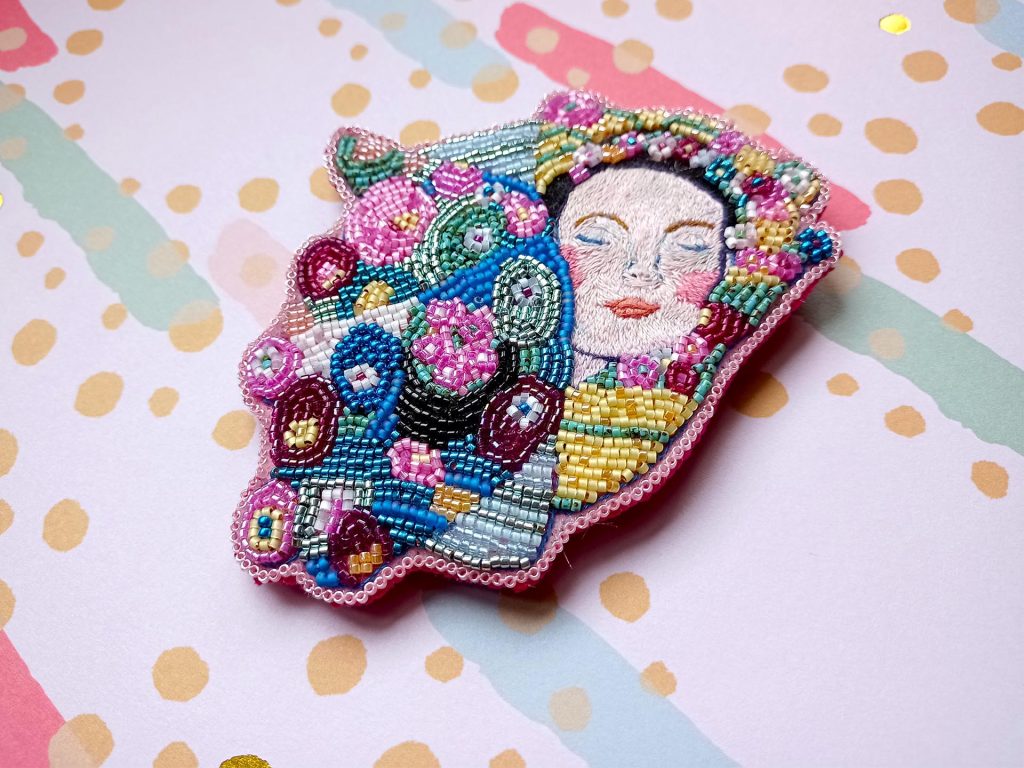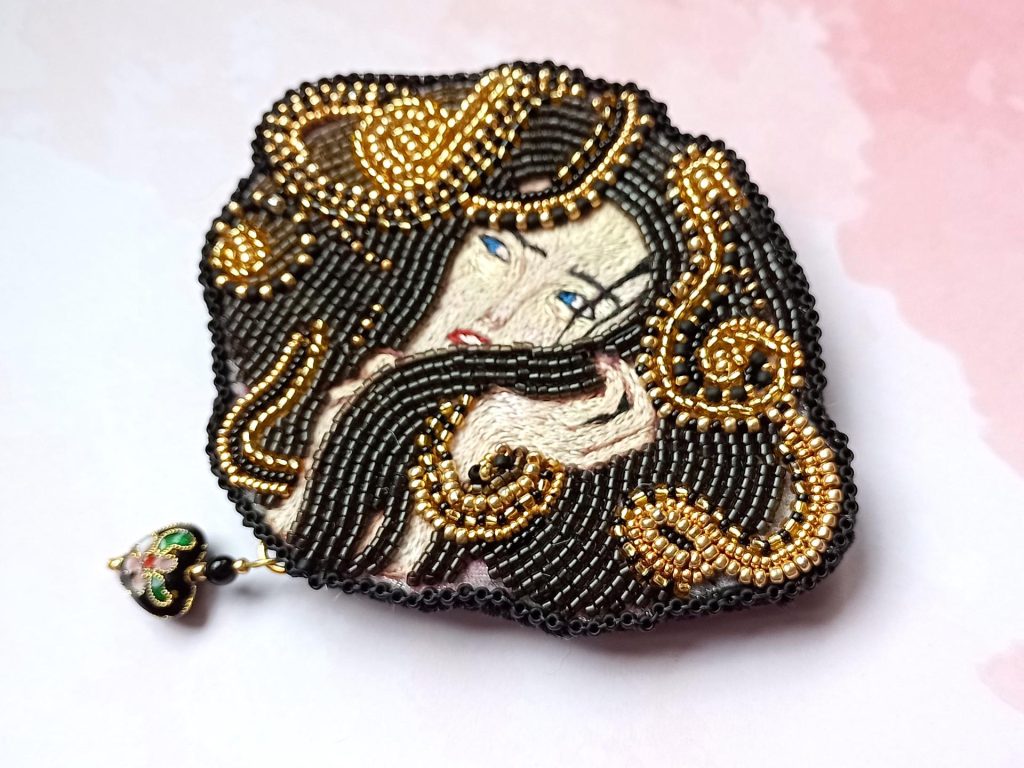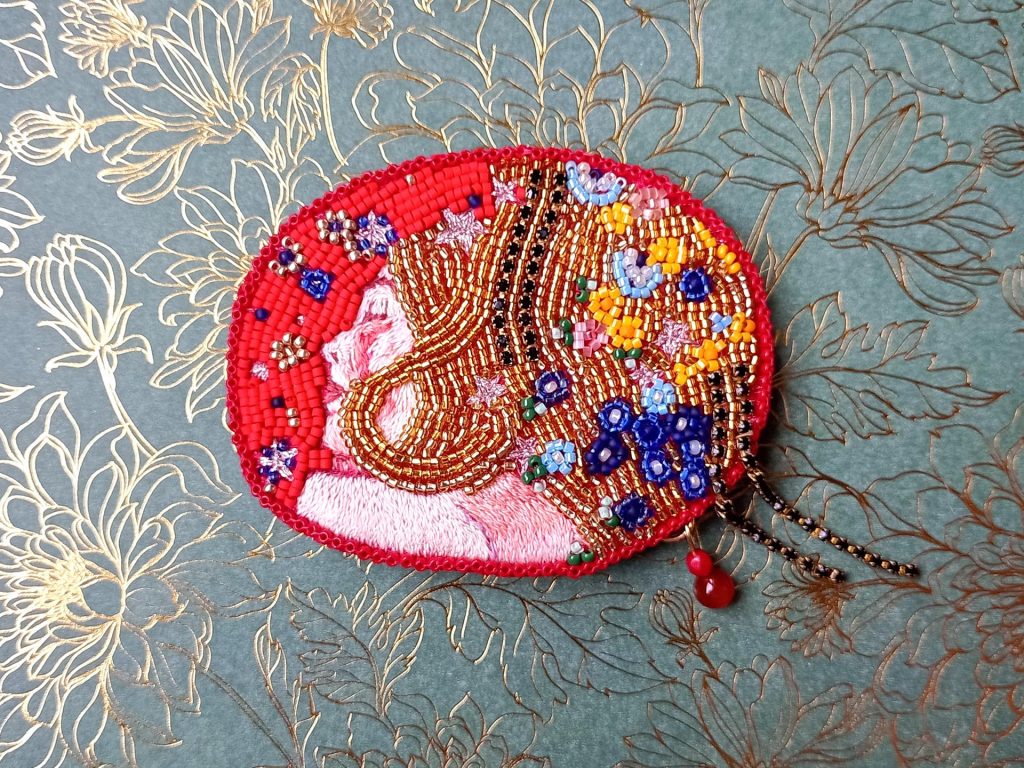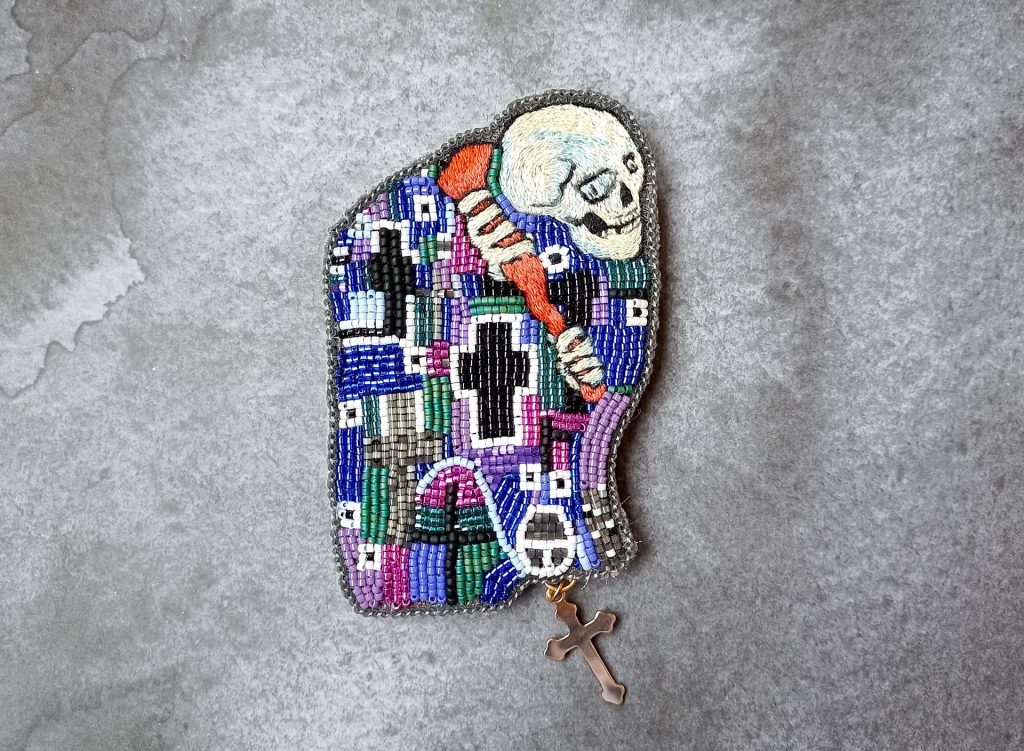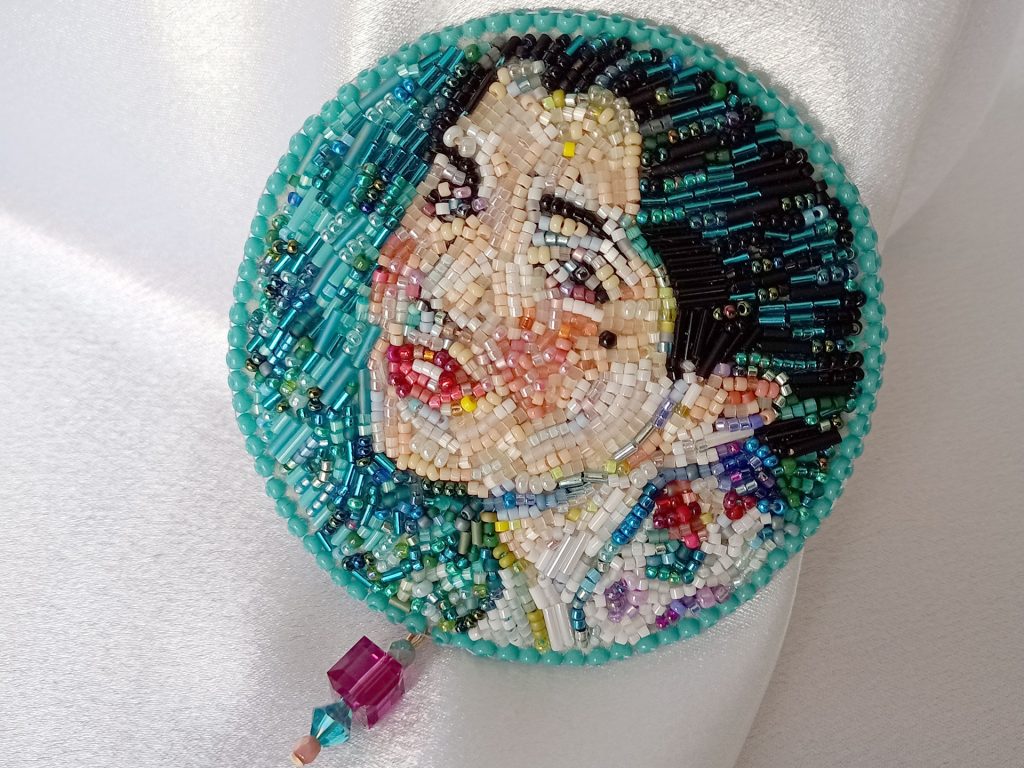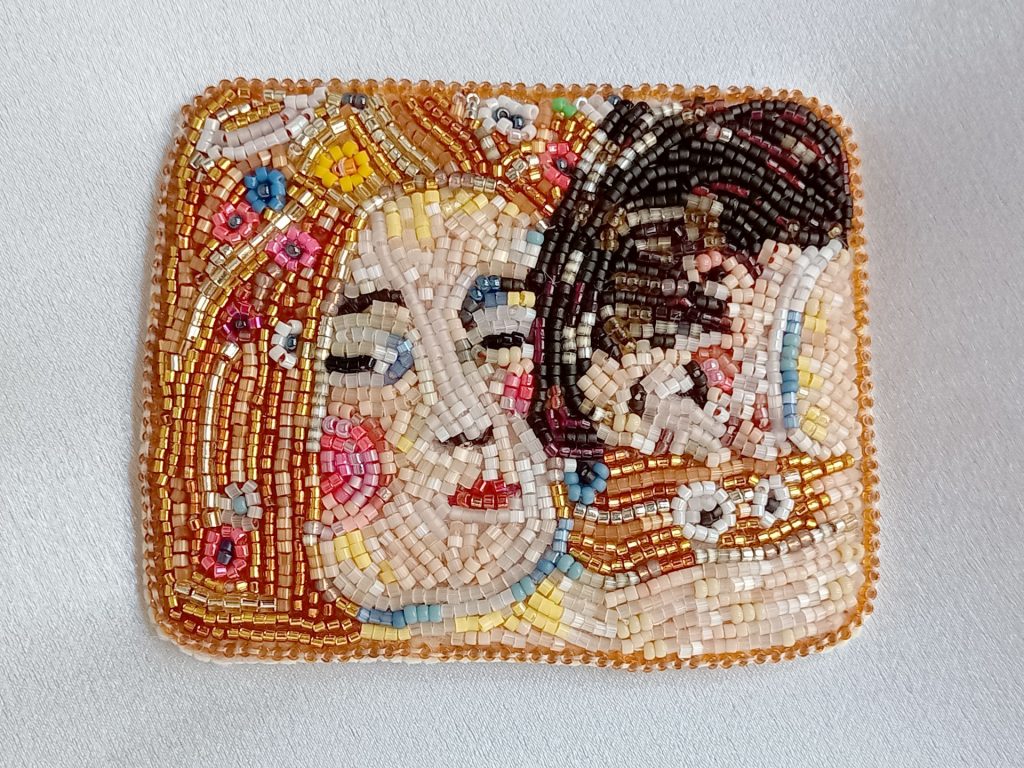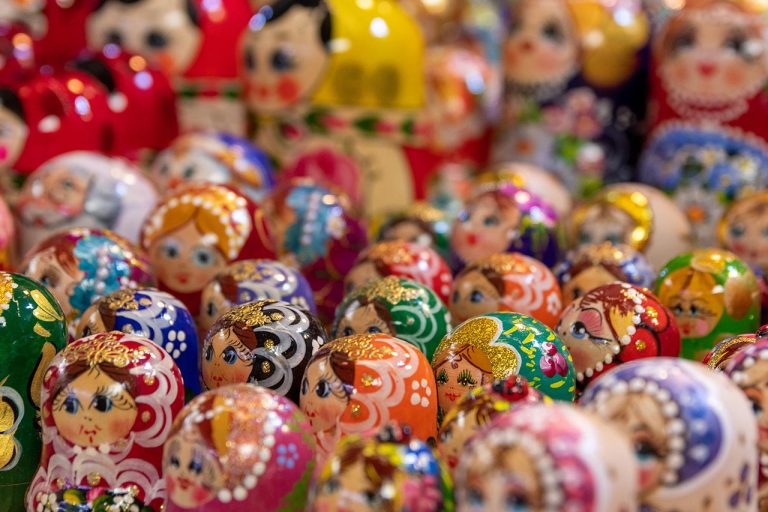Klimt, a major source of inspiration
New brooches have just landed in the shop! Do they tell you something? Surely yes 🙂
They are inspired by the work of the famous painter Klimt. You probably know him, if not by his name, at least by his works. We find reproductions of his paintings everywhere, on many supports, such as posters, mugs, mouse pads and what not, “The kiss” being undoubtedly his most famous painting. Its very decorative universe has conquered hearts.
Klimt’s Style
The reason for its success lies, in my opinion, in the beauty of its universe. A very feminine, poetic universe that seems to come out of a dream. His universal subjects, such as joy, youth, love or death, speak to the greatest number.
I have admired his world for a long time. As a teenager studying graphic arts, I often had my nose buried in art books of all kinds, and inevitably, one day, at the turn of a page, I met Klimt. Its very sensual universe, the richness of its patterns and the magic of its gilding enchanted me. The graceful feminine is an element that I have found in my own drawings since I was very young. Maybe that’s what appealed to me about this artist in the first place.
At Klimt, the honor is with women. His portraits or allegories, not always idealized, but always graceful. His subjects of mythological or allegorical inspiration join my love of legends and tales. In his portraits of women, I find a few fairies, a few witches, certain monstrous creatures and other enchantresses. These characters let the imagination invent stories and a life for each of these women. They become folktale beings, which amaze me so much.
Her stylized flowers, her mixtures of colors and interlocking patterns create a most original pavement, wrapping her feminine beings in an unreal veil.
Also, I who am not really interested in landscapes in general, I appreciate those of Klimt for their decorative side. They are often painted on square canvases, a bit like Seurat, with an extremely high horizon, where we see as much a vibrant geometric composition as a forest.
For the moment, Klimt’s works have inspired me with a few brooches, but surely there will be other jewels of the same ilk to my credit in the not so distant future 🙂 And many other little treasures… Keep an eye out! ^^
Brief history of Klimt
For the context, Klimt begins his painting around 1880. He is an artist of the Viennese Secession. He braved the straitjacket of the rules and the established codes of painting of his time, which would of course cause him setbacks. His work “Philosophy”, planned for the ceiling of the hall of the University of Vienna, was then considered as a provocation to libertinage and an attack on good morals. He is criticized for his overly erotic paintings, and even wonders about his mental health. Another place, other customs, he received a gold medal in 1900 at the Universal Exhibition in Paris for this same work. It will later be destroyed by the Nazis (speaking of Nazis and Klimt, I recommend the movie “Woman in Gold” with Helen Mirren and Ryan Reynolds, if you haven’t seen it).
Klimt had to give up seeing his works at university, but he kept the integrity of his style and his vision.
The painter visits Italy and studies the heavily ornamented gold Byzantine mosaics of the Basilica of Saint Vidal in Ravenna. It is a revelation for the artist. His taste for hard work has just been born. In Paris, he discovers the work of Toulouse-Lautrec, Gauguin, Bonnard and Matisse who will also greatly influence him.
The Beethoven frieze (which is a representation of Beethoven’s ninth symphony, hence its name) was supposed to be on temporary display for an exhibition by the Viennese secessionists, but it was bought and kept, and it is still there for us. dazzle. This says a lot about the success of his work, which I am sure will continue for decades to come.

